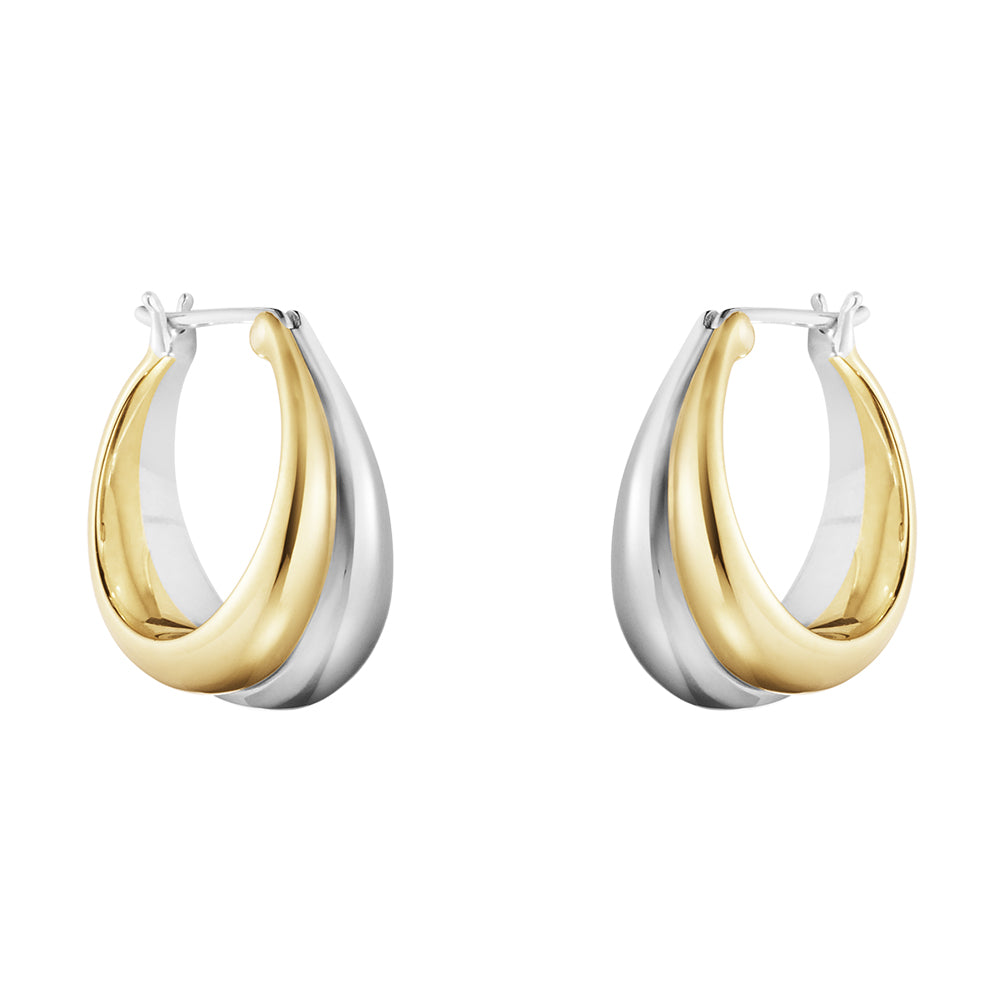
How Much Does It Cost to Resize a Ring?
Introduction
A ring, though small, holds immense meaning—wedding bands, heirlooms, or symbols of love. Yet fingers change with seasons and life. Resizing is both art and science, blending metallurgy, craft, and sentiment. This article explores its cost while unveiling the tradition and expertise behind it.

Why Ring Resizing Matters
At first glance, resizing appears to be a practical necessity: a ring is either too tight or too loose, and the jeweler adjusts it. But underneath lies a deeper layer of human biology, cultural symbolism, and even psychology.
Comfort & Circulation: A tight band can restrict blood flow, and the skin beneath may swell or even bruise. Dermatologists from the American Academy of Dermatology (AAD) caution that improperly fitted rings can act as “tourniquets” on soft tissue, potentially complicating pre-existing circulation issues. For people with arthritis or diabetes, this is especially concerning, making proper fit essential not just for aesthetics but health.
Loss Prevention: Loose rings, on the other hand, pose risks of loss—both financial and emotional. Imagine an engagement ring slipping into the ocean during a honeymoon swim, or a wedding band lost while gardening. Such moments illustrate why professional resizing is not a luxury but a safeguard.
Symbolism: More profoundly, the symbolism of a ring lies in its uninterrupted circle—eternal, complete. A poorly fitted band undermines this harmony, sitting awkwardly on the hand and silently contradicting its meaning. A resized ring restores not only comfort but spiritual alignment.
A ring is not merely worn—it becomes part of one’s skin memory, woven into gestures and daily life. Thus, resizing safeguards not only jewelry but the lived ritual of identity, intimacy, and continuity.

The Average Cost of Ring Resizing
The average cost of resizing a ring in the United States generally falls between $30 and $300, yet this simple range hides a more complex reality. The final price depends on multiple intertwined factors—metal type, craftsmanship, region, and the overall design of the ring. As Jewelers of America (JA) emphasizes, no two resizing jobs are ever identical. The true cost reflects not just “time spent,” but the delicate balance of artistry, precision, and the preservation of love’s most enduring symbol.
Within this spectrum, ring resizing price factors can be broadly categorized:
-
Simple resizing ($30–$60) typically applies to plain gold or silver rings, where jewelers can make quick, efficient adjustments.
-
Moderate resizing ($60–$120) usually involves resizing a ring by two sizes and may include light refinishing or polishing.
-
Complex resizing ($150–$300+) is common for platinum resizing or intricate rings with engravings or multiple gemstones, requiring advanced methods such as heating, resetting, or even laser welding.
Yet beyond these tiers lies another invisible layer: artistry and risk management. The jeweler’s reputation, years of training, and investment in specialized equipment (for instance, platinum torches or laser welders) directly influence the cost to resize a ring. Additionally, resizing often comes bundled with services like gemstone tightening or surface restoration, further shaping the final bill.
Ultimately, resizing a ring is not just a mechanical adjustment—it is an investment in the ring’s continuity, ensuring its fit, beauty, and symbolism endure for generations.

The Science of Resizing: A Metallurgical Perspective
Resizing is not only craftsmanship but also metallurgy, a field blending chemistry, physics, and artistry. Each metal carries unique properties that influence cost, risk, and technique.
Gold
Gold, one of humanity’s oldest worked metals, is soft and malleable. Pure 24k gold bends easily, almost like clay, but lacks the durability for daily wear. Most rings are made of 14k or 18k alloys, where copper, silver, or nickel is added for strength. These alloy compositions alter how heat flows during torch soldering. Jewelers must use karat-matched solder to ensure no visible seam emerges. A mismatch can create weak points or discoloration over time.
Platinum
Platinum is the opposite: dense, durable, and requiring extreme temperatures to manipulate. Unlike gold, platinum does not lose mass when filed; it shifts. This property makes platinum resizing more labor-intensive. The Platinum Guild International (PGI) notes that while platinum’s durability protects stones better than gold, its repair and resizing demand advanced skill and costly tools. Hence, resizing platinum rings often costs nearly double gold.
Alternative Metals
Metals like titanium, tungsten, and ceramic embody the spirit of modern innovation, yet they challenge the traditional art of resizing. Their exceptional hardness and, in some cases, brittleness make it nearly impossible for jewelers to alter them without risk of damage. Tungsten, for example, is so hard that it resists cutting but paradoxically can fracture under sudden pressure. Because of these unique properties, jewelers often suggest alternatives such as replacement bands or adjustable designs—factors that inevitably add to the overall cost considerations.
Thus, metallurgical science underpins every quote you receive for resizing, reflecting not only skill but the very physics of matter.

Factors That Affect Resizing Cost
Metal Type
Gold and silver are relatively straightforward to adjust, while platinum, titanium, and tungsten introduce difficulty and higher cost. Specialty metals may even require sending the ring to certified facilities, adding shipping and service fees.
Ring Thickness and Style
The thickness and width of a band directly affect cost. A 2mm thin gold band may be resized quickly, while an 8mm men’s platinum band could require significant added metal, careful reshaping, and longer labor. Ornate designs with filigree, etching, or milgrain edges present additional challenges, as every detail must be restored after the adjustment.
Gemstone Setting
Rings with side stones, pavé settings, or tension mounts complicate resizing. Heat can loosen stones or even cause fractures in sensitive gems like emeralds. In such cases, jewelers may have to remove and reset stones, which adds time and cost. Some high-value gems may require laser welding rather than flame soldering to minimize risk.
Up vs. Down Sizing
Sizing up requires inserting new metal, matched in color and karat, which naturally costs more than downsizing. Downsizing involves cutting out a small portion and rejoining, but precision is key—an imprecise join risks weakness or visible seams.
Geographic Location
Location dramatically influences cost. Major urban hubs like New York City or Los Angeles see resizing prices nearly double due to higher rent, insurance, and labor costs. In contrast, small-town jewelers may offer more affordable services while still maintaining artisanal quality.
Ultimately, the factors shaping cost are interconnected, with craftsmanship bridging the gap between raw materials and emotional value.

Cultural and Historical Angles: Why Resizing Reflects Ritual
Resizing is more than technical convenience—it is cultural continuity. Throughout history, resizing has been woven into the story of love, memory, and inheritance.
In Victorian England, mourning rings were passed through generations, often resized to fit new heirs. Each alteration embedded layers of memory, making resizing not loss but transformation.
In Japan, rings were traditionally viewed as fixed symbols. When too loose, bands were tied with silk cords rather than resized—a philosophy reflecting permanence and acceptance of imperfection, rooted in the aesthetic of wabi-sabi.
In India, resizing gold jewelry has been tied to devotion and ritual. Ancient Hindu texts describe the sanctity of gold, warning that altering it must be done reverently. The act of resizing was often accompanied by prayers, acknowledging the metal’s spiritual energy.
Even today, resizing remains ritualistic. A wedding band adjusted for a new stage of life mirrors the evolving relationship it represents. It is less a correction than a renewal of vows between object and wearer.
The Hidden Costs: Risks and Insurance
Beyond visible pricing lies a world of hidden costs.
Structural Integrity: Excessive resizing—typically more than three sizes up or down—can thin the shank and weaken the band. Over time, this may cause warping or even snapping. Jewelers may suggest a full shank replacement, a costlier procedure.
Warranty Concerns: Many major brands enforce strict resizing rules. Pandora, for example, cautions that unauthorized alterations may void product guarantees (Pandora Care Guide). Customers often overlook these terms until it is too late.
Insurance Adjustments: Jewelry insurers like Jewelers Mutual recommend updating appraisals post-resizing (Jewelers Mutual). A resized ring may contain additional metal or altered settings, potentially changing value. Without updated records, claims may face disputes.
Thus, resizing is not just about affordability—it is about ensuring the ring’s structural, financial, and sentimental security in the long run.

Rarely Discussed Insights: The Biology of Fit
Ring sizing is not static, and biology plays a surprising role in cost-effectiveness.
Circadian Swelling: Fingers swell and contract throughout the day. Rings sized in the morning may feel tight at night. Jewelers often advise fitting mid-day for the most balanced result.
Temperature Sensitivity: Heat expands blood vessels, enlarging fingers; cold causes contraction. A ring perfect in summer may spin loose in winter.
Life Changes: Pregnancy, aging, arthritis, and even medication can permanently alter finger size. For instance, corticosteroid use may increase swelling, while weight loss can lead to unexpectedly loose rings.
Medical Considerations: In rare cases, improperly fitted rings can cause medical emergencies, requiring emergency department removal using ring cutters or even string-wrapping methods recommended by the American Academy of Orthopaedic Surgeons (AAOS).
Understanding this biological rhythm ensures that resizing decisions account for both present comfort and future changes, avoiding multiple costly alterations.
Innovations in Resizing: Beyond Cutting and Soldering
Modern jewelers are expanding the vocabulary of resizing, introducing alternatives that combine practicality with compassion.
Spring Inserts: These are flexible bands inserted inside the ring, offering a snug fit without full resizing. Especially useful for arthritic patients, they allow comfortable wear despite fluctuating finger size.
Sizing Beads: Small metal beads added to the inner shank provide gentle resistance, preventing spinning. They cost less than full resizing and can be removed or adjusted later.
Hinged Shanks: Ideal for medical conditions, hinged shanks allow rings to open and close like bracelets, accommodating knuckles that are larger than the base of the finger. Though expensive ($200–$500), they often preserve cherished pieces otherwise unwearable.
These innovations reflect not just engineering progress but empathy—recognition that jewelry is bound to the realities of the human body.

The Emotional and Economic Value of Resizing
Resizing is more than a technical service—it is an act of preservation: of heritage, of investment, and of romance.
Emotional Value
When a ring is resized, it does more than conform to a finger—it conforms to a story. Imagine a grandmother’s engagement ring, once too loose for her granddaughter, now carefully resized for a wedding day. The adjustment ensures that the ring does not rest in a drawer but continues to live in daily touch with the next generation. Such transformations allow heirlooms to remain part of birthdays, anniversaries, and milestones, weaving the memory of loved ones into new beginnings. In this sense, resizing is not simply about fit; it is about continuity.
Economic Value
On the practical side, resizing prolongs the functional lifespan of a ring, making it usable for decades rather than pushing owners toward costly replacements. A resizing job that costs $80 may spare someone from purchasing a new $800 band. Beyond personal budgets, the impact ripples outward: choosing to adjust rather than replace reduces the environmental strain of fresh mining, casting, and gemstone sourcing. For couples conscious of both finance and sustainability, resizing becomes an act of responsibility as much as romance.
A Bridge Across Time
Together, these dimensions show that resizing sustains both sentiment and value. It allows jewelry to grow and adapt alongside human lives—tightening, expanding, reshaping—just as love itself does. What begins as a small adjustment in millimeters becomes a safeguard of legacy, meaning, and economic wisdom.
How to Save Money Without Compromising Quality
Resizing need not be extravagant. Smart, lesser-known strategies include:
Choose Local Artisans: Independent jewelers often charge less than big-brand boutiques, while delivering personalized attention and equal, if not superior, craftsmanship.
Resize Once, Not Often: Wait until weight changes, pregnancy, or medical treatments stabilize to avoid multiple costly alterations.
Adjustable Designs: Consider purchasing rings with hidden adjustability, especially for engagement or promise rings. These designs reduce long-term resizing costs.
Bundled Services: Some jewelers offer resizing alongside polishing or stone tightening at no additional cost—ask before committing.
These practical approaches balance budget with quality, ensuring that love is not compromised by financial strain.

Case Studies: Real-Life Scenarios
Stories often reveal the very practical—and very human—side of resizing:
The Everyday Swelling
A nurse in her 40s found her ring becoming unbearably tight after long shifts on her feet. Rather than risk cutting the band during an emergency, her jeweler recommended enlarging the shank slightly and smoothing the interior. The $90 adjustment meant she could wear her ring safely every day without worry.
The Delicate Heirloom
A customer inherited a vintage Art Deco ring with filigree so fine that traditional soldering could have destroyed it. The jeweler used a precision laser, commonly applied in high-end watch repair, to resize it. The process cost around $400, but it ensured that the intricate patterns remained untouched while the ring found new life on its new owner’s hand.
The Health Challenge
An older gentleman with arthritis could no longer slip his wedding band over swollen knuckles. Instead of giving up wearing it, his jeweler installed a hinged shank—allowing the ring to open and close with a discreet clasp. The adaptation cost more than a simple resize, but the emotional return of wearing his band daily was priceless.
These everyday cases show that resizing is not just a service—it is a form of problem solving, where craftsmanship meets the real, evolving needs of people’s lives.
Conclusion
Resizing a ring is more than altering metal—it is safeguarding memory, sentiment, and future meaning. The cost, ranging from $30 to $300 or more, reflects not just materials but craftsmanship, biology, history, and emotional resonance. Each resized ring is reborn, ready to continue its story in harmony with its wearer.

FAQ
Q1: How many sizes can a ring be resized?
Most rings can be adjusted up or down two sizes. Beyond that, jewelers may recommend reinforcement or redesign to preserve integrity.
Q2: Can all rings be resized?
No. Titanium, tungsten, and ceramic rings are often non-resizable. Alternatives like replacement, sizing beads, or adjustable bands are recommended.
Q3: Does resizing damage a ring?
If performed by a skilled jeweler, no. However, extreme resizing or inexperienced craftsmanship can weaken the band.
Q4: How long does resizing take?
Anywhere from one hour to two weeks, depending on complexity, jeweler workload, and whether stones need resetting.
Q5: Should I insure my ring after resizing?
Yes. Update appraisals and policies, as resizing may affect material weight, design, and therefore insurable value.
Call to Action
Your ring is not just metal—it is memory, commitment, and art. If your ring does not fit perfectly, trust a certified jeweler to restore harmony between your hand and your story. Explore high-quality, adjustable, and timeless designs—because jewelry should evolve as beautifully as the love it represents.







